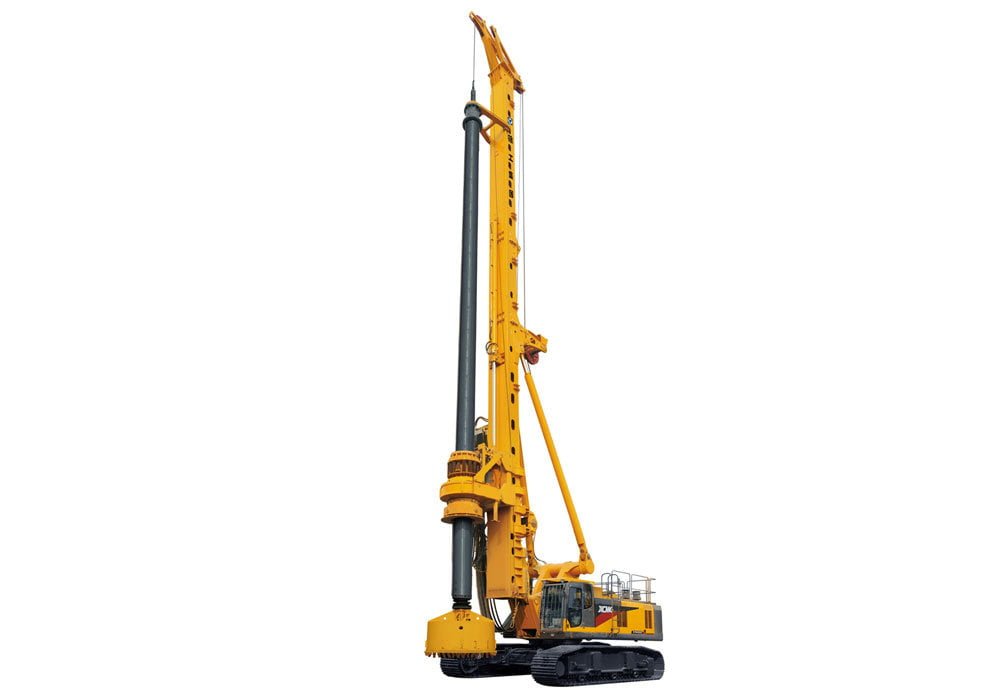Introduction

Investing in a rotary drilling rig is a major decision that opens up subsurface access for applications ranging from mineral exploration to geothermal energy production. These versatile and powerful rigs use rotational forces to penetrate deep into the earth’s crust across all sorts of geological conditions.
However, with so many rotary rig configurations and specifications available, it can be overwhelming selecting the right model suited to your site location and application. Focusing your search around key parameters and considerations will aid the buying process when exploring the diverse rotary rig market.
In this guide, we will cover:
Table of Contents
Gaining clarity around these essential purchasing details will help contractors and managers pick out rotary rigs ready for efficient, trouble-free drilling.
Rotary Drilling Methods

While all rotary rig types apply rotational forces for drilling wells, a few methods provide the torque, speed, and hydraulic pressure:
Conventional Rotary Table– A square or hexagonal rotary table rotates the drilling string via a kelly spinner. The table turns between 40 to 100 RPM depending on model. Simple and reliable mechanical power.
Top Drives – These motor assemblies grip and spin drill pipe directly without a kelly. They generate higher rotational torque exceeding 20,000 foot-pounds for faster drilling in hard formations.
Downhole Mud Motors – Hydraulic turbines near the drill bit are powered by drilling fluid circulation downhole. Allow precise directional drilling control.
Matching the right system to your site’s geological formations and well design is critical upfront.
Key Rig Specifications
Every rotary rig model is defined by operating capacities and dimensions that dictate its drilling capabilities. See the most vital specs to consider:
| Specification | Description |
|---|---|
| Depth Rating | Maximum vertical well depth capacity |
| Hoisting Capacity | Max pull force the rig can lift or lower |
| Rotational Torque | Available downhole twisting force for drilling |
| Horsepower | Engine power rotating drill string |
| Drill Pipe Capacity | Total drill string length rig can utilize |
Additionally, physical size constraints, mobility factors, and drilling fluid handling systems should be weighed. Larger rigs drill deeper but require more area and setup.
Components and Configurations
Standard rotary rig infrastructure includes a:
- Power Source – Diesel, electric, hydraulic motors
- Hoisting System – Drawworks, blocks, winches
- Circulating System – Fluid tanks, pumps and pipes
- Rotating System – Rotary table, top drive or mud motors
- Mast – Steel latticework structure housing hoisting pulleys
- Substructure – Racking platforms for drill pipe, related equipment
Skid rigs, truck rigs, and full-sized conventional rigs offer different component mobility and setup times. Modular designs can also be customized across brands. Shop around!
Power Source Options

Rotary drilling performance necessitates robust power generation sourcing the hydraulic, electric, and rotation systems.
Diesel Engines – Tried and true diesel motors supply necessary shaft horsepower. Power density output makes them a common oilfield choice despite higher emissions.
Electric Motors – Greener electric motors eliminate local emissions for environmental compliance. Require access to sufficient electrical supply.
Natural Gas/Propane Engines – Alternative gaseous fuels also reduce environmental impact while avoiding expense of electric lines.
Don’t underestimate required power budgets when drilling deeper wells even with high-torque top drives. Power directly correlates to rotational speed and hoisting capacity.
Operational Considerations
Beyond technical specifications, assessing operational expectations will aid rig materials selection and maintenance planning including:
- Environment – Will the rig work mostly indoors or outdoors? What weather conditions will it face? How might dust/debris enter the rig? All impact longevity.
- Working Schedule – Understanding expected hours of use per day/week helps right-size components and maintenance needs. Infrequent operation limits wear.
- Accessibility – If the rig will operate in remote regions far from supply depots, critical spare parts inventory becomes vital. This may require redundant systems or larger component capacities as buffers.
Evaluating operating realities upfront provides a helpful checklist when inspecting different makes and models.
Conclusion
With a wide variety of makes, models, and configurations to pick from, taking the time to understand key specifications, expected drilling environments, operational realities, and supplier offerings takes the guesswork out of selecting a high-performance rotary drilling rig.
Focusing on maximum depth capacity, hoisting strength, hydraulic horsepower, mobility factors, maintenance and training support will enable informed, aligned purchasing decisions.
FAQs:Rotary Drilling Rig Uses
What are the most heavy-duty rotary rig types?
For extreme drilling loads in challenging formations, conventional oilfield rigs with diesel power exceed other configurations, some reaching over 2,000 installed horsepower with millions of pounds of hoisting capacity.
What determines if I need a mud rotary rig vs an air rotary rig?
Air rotary rigs recirculate air rather than drilling muds downhole. Better for hard rock drilling. Mud rotary rigs create superior borehole stability through fluids in soft sediments or where straight wellbores are required.
Who are the best rotary rig manufacturers?
Industry leaders known for performance and reliability include National Oilwell Varco, Nabors, Helmerich & Payne in the oil services segment. Exploration drill brands include Boart Longyear, Foremost, Comacchio, and Bucyrus Erie.
What safety aspects should I inspect on a rig?
Verify inspection certifications for critical items like hoisting wire ropes, blowout preventers, pipe handling tools, faulty electrical connections, guarding around rotating components, and backup safety devices. Don’t ignore safety gear!
What skill level rig crews should I hire?
Both beginning roughnecks and seasoned drillers have a place, but ensure you have supervision from properly certified toolpushers, drilling foremen, and rig managers familiar with operational best practices to oversee safe, efficient drilling.





-150x150.webp)
